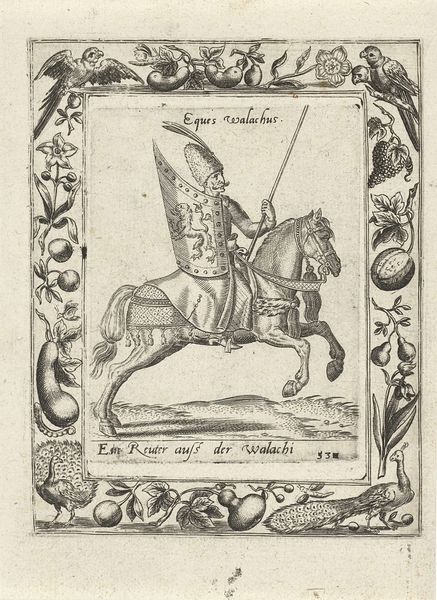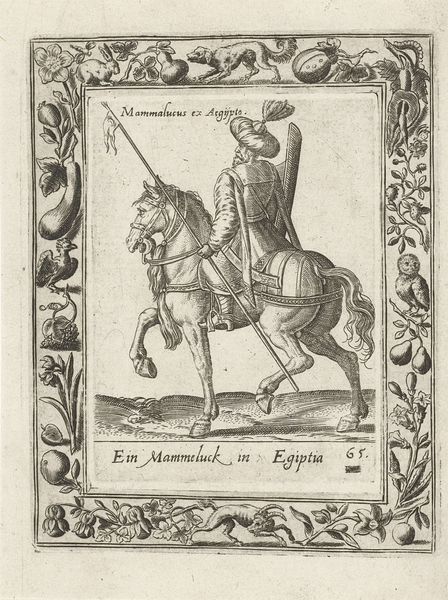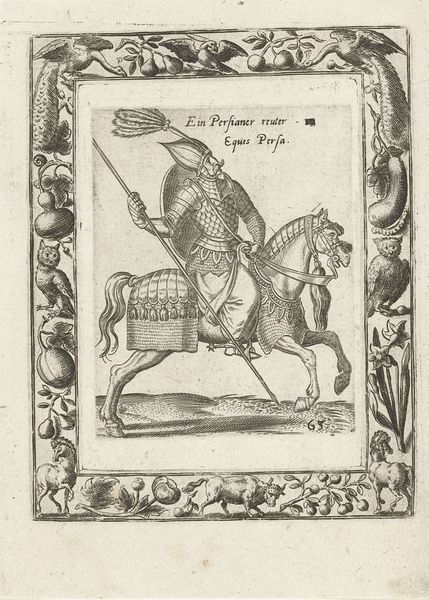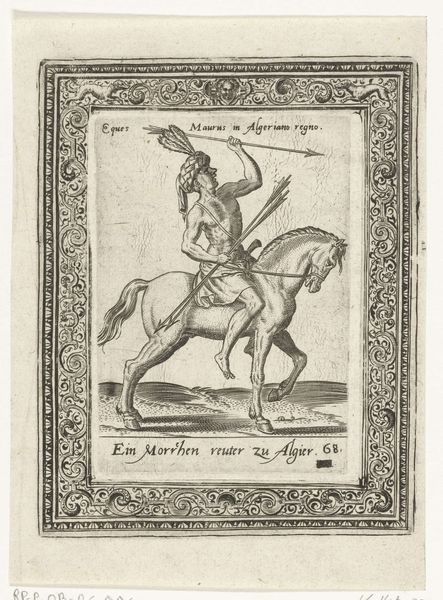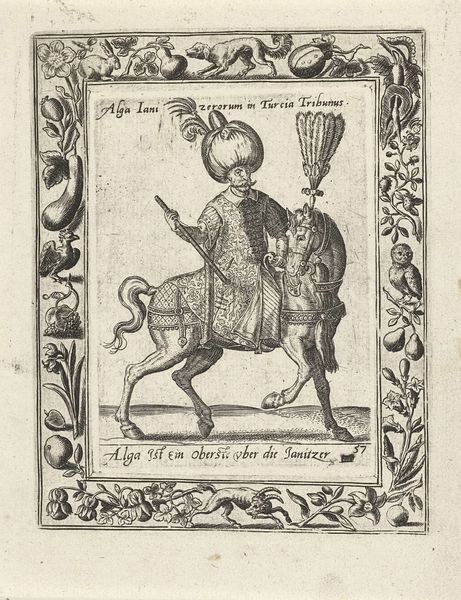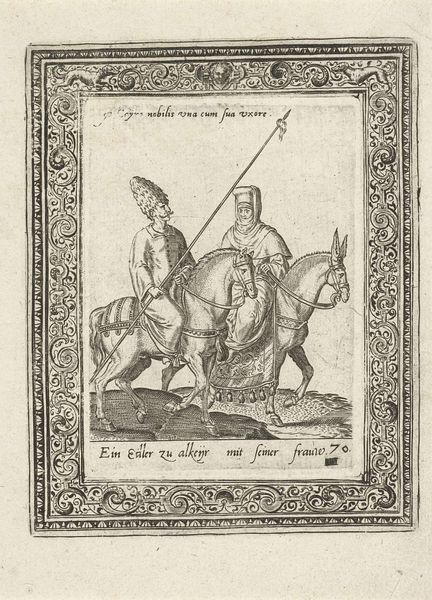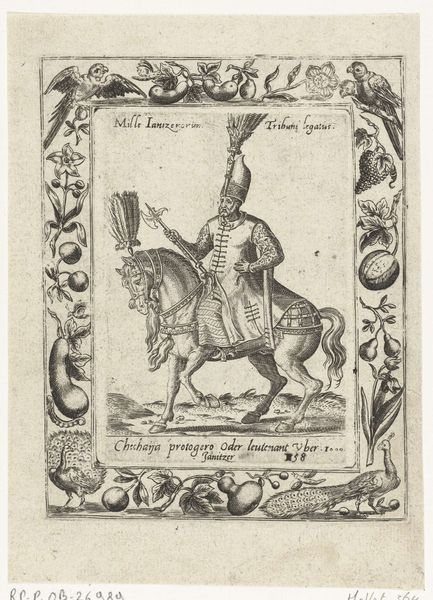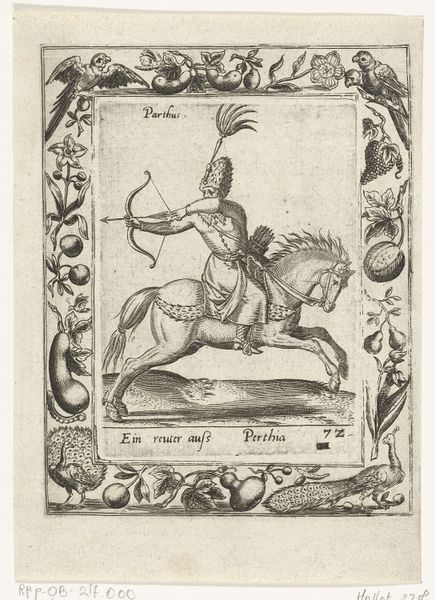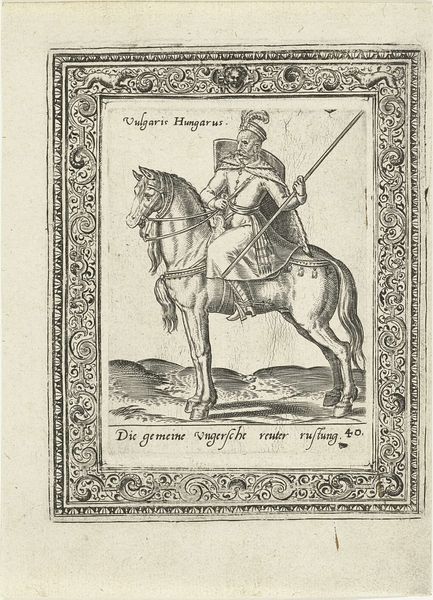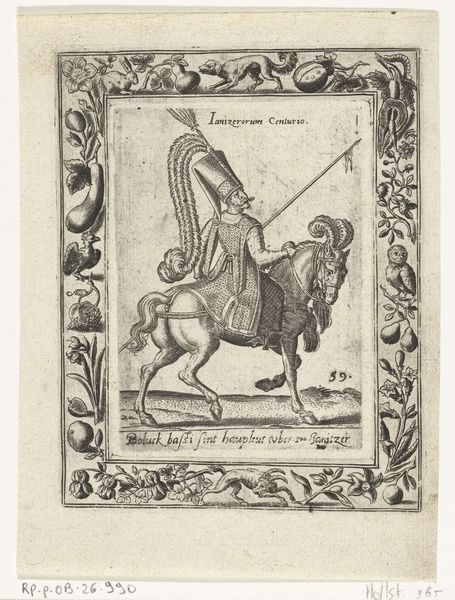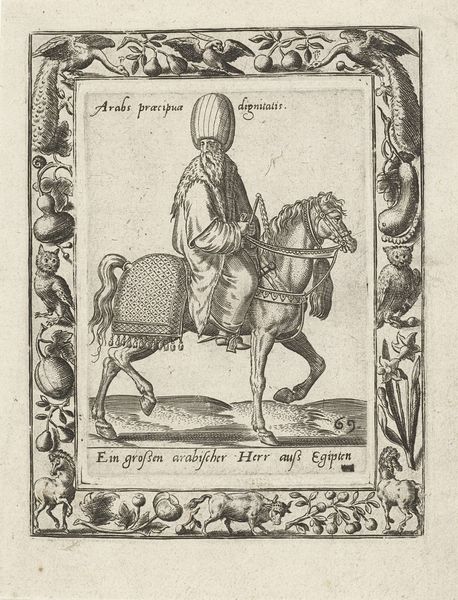
Dimensions: height 103 mm, width 74 mm, height 142 mm, width 110 mm
Copyright: Rijks Museum: Open Domain
Editor: Here we have "Arabische ruiter" by Abraham de Bruyn, created in 1577. It’s an engraving, quite small, with a decorative border. What immediately strikes me is how the central image of the rider, feels… well, rather Westernized despite its supposed Arabian subject. How should we interpret this depiction? Curator: That's an excellent observation. Consider this engraving in its historical context. In 1577, what did "Arabia" signify to a European audience? Likely, a land of exoticism and perceived otherness, but seen through a Western lens, inevitably shaped by colonial desires and projections. The "Orientalist" style hadn't fully flowered yet, but the seeds were being sown. Editor: So, you're saying the artist's interpretation might tell us more about European perceptions than actual Arab culture? Curator: Precisely. Think about the role of prints at the time – they circulated widely, shaping public opinion. An image like this, seemingly ethnographic, actually played a part in constructing a particular image of the “Arab” for European consumption. How do you see the function of the surrounding ornamental imagery with animals, plants and fruits playing into this idea? Editor: The border is intriguing. Those carefully depicted flora and fauna… maybe they’re intended to signify a richness or abundance associated with this “Arabia”? Or it could even make a link to a certain understanding of "Paradise", how Christians believed other land looks like. Curator: A persuasive reading! Remember, the visual vocabulary used, even in seemingly minor details, contributes to a broader cultural narrative. The politics of imagery are always at play. Editor: I see it. This piece reflects an emerging colonial mindset by using inaccurate representation as its language. That it had impact on the masses by popular image-making strategies such as engravings. Curator: Exactly! It encourages us to be critical of seemingly neutral representations and acknowledge the historical power dynamics embedded within them. It certainly broadens one's outlook to approach art through cultural history! Editor: Definitely something to think about! I appreciate how you untangled the threads of history, culture, and politics in one image!
Comments
No comments
Be the first to comment and join the conversation on the ultimate creative platform.

